Minimalism and Sustainable Living: Simple Steps to Clarity
Category: Lifestyle
Embrace Simplicity for a Sustainable Life
If you’ve landed here, you’re likely feeling overwhelmed by the clutter and chaos—both physical and mental—that modern life brings. You probably know that living more simply and sustainably can improve your well-being and the planet’s health, but finding tangible steps to start can feel confusing or daunting. Maybe you’ve tried decluttering, yet the process felt incomplete or unsustainable. Or perhaps you’re curious about reducing your environmental impact without sacrificing comfort and joy.
This article is designed for you: the thoughtful individual seeking practical, insightful guidance on adopting minimalism intertwined with sustainable living. It’s not about extremes or perfection—it’s about making clear, manageable choices that bring focus, fulfillment, and positive change.
Unlike generic content scattered across the web, here you’ll find a well-structured roadmap that balances the art of simplicity with conscious stewardship of resources. From understanding core principles to actionable habits that transform your home, habits, and mindset, this guide bridges minimalism and sustainability in a way that resonates with your desire for clarity and purpose.
Read on to unlock how a simplified life can amplify your happiness, deepen your connection to the environment, and empower you to live with intentionality every day.
- Embrace Simplicity for a Sustainable Life
- Understanding Minimalism and Sustainable Living
- The Benefits of Combining Minimalism with Sustainability
- Evaluating Your Current Lifestyle: Where to Begin?
- Decluttering with Purpose: Sustainable Strategies for Intentional Simplicity
- Sustainable Consumption Habits: Making Mindful Purchasing Decisions
- Implementing Energy and Resource Conservation at Home
- Minimalist Eating: Sustainable Nutrition Choices
- Cultivating a Mindful and Intentional Mindset
- Challenges and How to Overcome Them: Navigating Obstacles on Your Minimalism and Sustainability Journey
- Resources and Tools to Support Your Journey
Understanding Minimalism and Sustainable Living
At its core, minimalism is a lifestyle philosophy focused on intentional simplicity—eliminating excess to create space for what truly matters. It encourages mindful consumption and a deliberate approach to possessions, time, and energy. Minimalism frees you from the distractions of clutter and impulse, fostering clarity, peace, and greater appreciation for life’s essentials.
On the other hand, sustainable living centers on making environmentally conscious choices that reduce your ecological footprint. It involves practices like minimizing waste, conserving natural resources, and supporting ethical production. Sustainable living promotes a balanced relationship with the planet, ensuring that current needs are met without compromising future generations.
While distinct, minimalism and sustainable living share core values such as intentionality, respect for resources, and a commitment to reducing excess. Together, they form a powerful lifestyle approach that champions:
- Purposeful consumption — Choosing quality over quantity, and valuing longevity over disposability.
- Mindful habits — Being aware of how daily actions impact both personal well-being and the environment.
- Resource stewardship — Conserving energy, reducing waste, and prioritizing eco-friendly alternatives.
By embracing minimalism alongside sustainable living, you cultivate a life that is not only simpler but also more ethical and environmentally responsible. This synergy creates a foundation for intentional simplicity and environmental consciousness, empowering you to live with clarity, reduce stress, and make a meaningful positive impact on the planet every day.

Image courtesy of cottonbro studio
The Benefits of Combining Minimalism with Sustainability
Integrating minimalism with sustainable living delivers powerful physical, mental, and environmental benefits that enhance your overall quality of life. By choosing to live simply and consciously, you reduce not only clutter but also stress and unnecessary consumption—resulting in a more balanced, fulfilling lifestyle. On a physical level, this approach encourages decluttering and prioritizing essentials, which frees up space and promotes a healthier, more organized home environment.
Mentally, the intentional practice of minimalism combined with sustainability cultivates clarity and peace of mind. When you focus on what truly matters, you naturally reduce decision fatigue and anxiety caused by excess possessions or wasteful habits. This mindful living reduces stress, enhances focus, and nurtures greater contentment with less. Financially, the benefits are significant: by purchasing fewer, higher-quality items and reducing resource waste, you save money over time, avoid impulse spending, and build sustainable financial habits.
Environmental benefits are equally profound. Living minimally means consuming less, which directly lowers your ecological footprint. Choosing sustainable products, reducing waste, conserving energy, and supporting ethical brands collectively decreases pollution and resource depletion. This alignment between minimalism and sustainability fosters a deep connection to the planet, transforming everyday choices into impactful actions for environmental preservation.
Key Benefits at a Glance
- Reduced Stress and Mental Clarity
- Less clutter creates calm, focused living spaces.
- Mindful consumption decreases decision fatigue.
- Financial Savings
- Fewer purchases mean more money saved.
- Investing in durable, eco-friendly products prevents frequent replacements.
- Lower Ecological Footprint
- Reduced waste and energy consumption.
- Support for sustainable and ethical goods reduces environmental harm.
- Enhanced Quality of Life
- More intentional time and energy for meaningful experiences.
- Stronger connection to personal values and the natural world.
By embracing this combined lifestyle, you unlock a cycle of positive reinforcement, where simplicity fuels sustainability and sustainability enriches your minimalist journey—culminating in a life that is healthier, richer, and more aligned with both personal well-being and planetary care.

Image courtesy of Mikhail Nilov
Evaluating Your Current Lifestyle: Where to Begin?
Before embarking on your journey toward minimalism and sustainable living, it’s essential to take a clear-eyed look at your current consumption patterns, waste generation, and clutter. This self-assessment is the foundation for creating an intentional, eco-conscious lifestyle aligned with your values. By understanding where excess lies—from the products you buy to the waste you produce—you can identify practical, targeted areas for improvement that don't overwhelm but rather inspire meaningful change.
Assess Your Consumption Patterns
Start by tracking your purchases over the past month. Ask yourself:
-
What items do I buy frequently, and are they necessary?
Consider whether these purchases add lasting value or simply contribute to clutter and waste. Highlight opportunities to shift toward quality over quantity, favoring durable, eco-friendly goods. -
Do I own products that serve multiple purposes?
Multipurpose items reduce the need to buy more and limit environmental impact. For example, a reusable water bottle replaces countless disposable ones. -
Am I supporting brands with sustainable and ethical production?
Aligning your spending with companies committed to environmental care strengthens your sustainable lifestyle.
Analyze Your Waste Generation
Next, evaluate the amount and types of waste your household produces:
-
How much trash goes into the landfill each week?
Track non-recyclable waste to pinpoint avoidable disposables like plastic packaging or single-use items. -
Are you composting organic waste?
Composting reduces methane emissions and enriches soil, linking minimalism to ecological stewardship. -
What recycling practices are in place?
A robust recycling routine can significantly decrease your ecological footprint and foster habits of conscientious disposal.
Examine Physical and Mental Clutter
Decluttering isn’t just about possessions—it’s about freeing your mind and environment from distractions:
-
Which areas of your home feel congested or overwhelming?
Spaces filled with unused or rarely used items signal opportunities to donate, recycle, or rehome belongings. -
Do your possessions align with your current values and needs?
Let go of items that no longer serve you or contribute meaningfully to your well-being and sustainability goals.
By carefully assessing these dimensions of your lifestyle, you can craft a personalized minimalist and sustainable action plan. This plan will prioritize conscious consumption, minimize waste, and cultivate simplicity that is both practical and planet-friendly. Through this process, intentional living becomes not just an idea but a daily practice that gradually transforms your environment and mindset for the better.
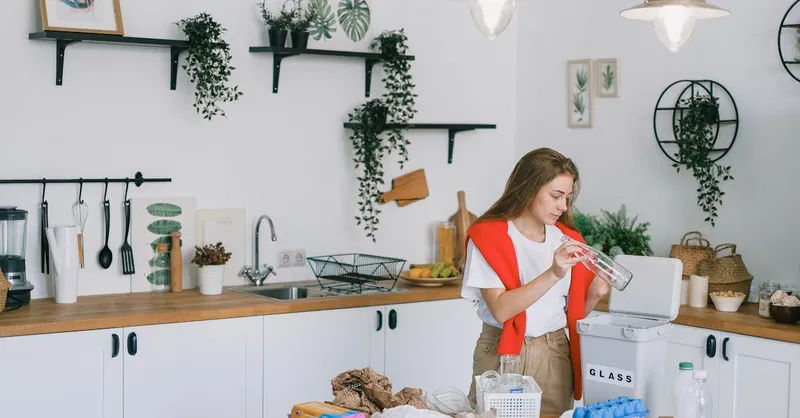
Image courtesy of SHVETS production
Decluttering with Purpose: Sustainable Strategies for Intentional Simplicity
Decluttering is a cornerstone of minimalism, but when combined with sustainable living principles, it transforms from a simple tidying exercise into a mindful, eco-friendly practice. Instead of hastily discarding unwanted belongings, decluttering with purpose involves thoughtful actions that reduce waste, extend the life of items, and contribute positively to your community and environment. This approach minimizes landfill contributions while honoring the value embedded in your possessions.
Here are strategic tips to guide your sustainable decluttering journey:
-
Donate Items to Trusted Organizations
Giving usable clothing, household goods, and electronics to charities, shelters, or local nonprofits supports social causes and keeps items in circulation, preventing premature disposal. -
Repurpose and Upcycle Creatively
Before recycling or donating, consider if items can be transformed for new uses—such as turning glass jars into storage containers, old textiles into cleaning rags, or furniture into functional decor. This extends product life cycles and sparks eco-conscious creativity. -
Recycle Responsibly and Locally
When items can no longer be reused or repurposed, ensure they enter appropriate recycling streams. Check your community’s recycling guidelines to avoid contamination and maximize material recovery. -
Sell or Swap to Find New Homes
Platforms for selling or swapping gently used items encourage a circular economy, reducing demand for new products and supporting resource conservation. -
Practice Mindful Buying to Prevent Future Clutter
Sustainable decluttering connects closely with intentional consumption, helping you avoid unnecessary purchases that contribute to waste and clutter.
By incorporating these strategies, your decluttering becomes a powerful tool for sustainability, turning the act of letting go into an opportunity for environmental stewardship and meaningful connection with your belongings. This purposeful approach not only creates clear, calming spaces but also aligns your minimalist lifestyle with the larger goal of protecting our planet.
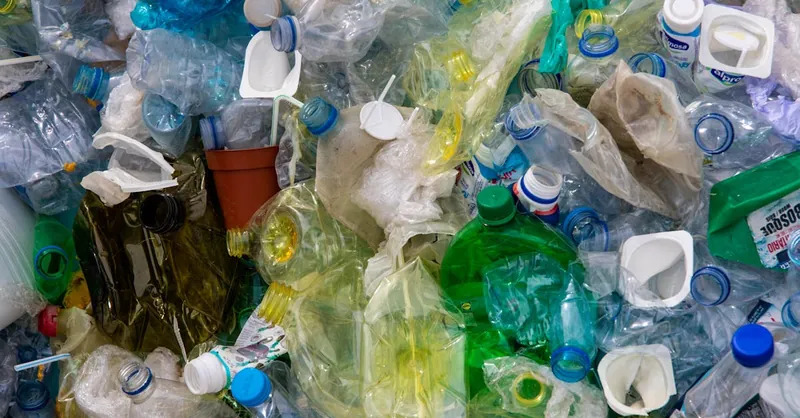
Image courtesy of Magda Ehlers
Sustainable Consumption Habits: Making Mindful Purchasing Decisions
Adopting sustainable consumption habits is a vital step in aligning minimalism with environmental responsibility. At the heart of sustainable living is the principle of mindful purchasing—choosing products deliberately based on their quality, ecological impact, and the ethics of the brands behind them. Rather than accumulating items that quickly lose their value or contribute to waste, focus on quality over quantity by investing in durable, timeless pieces that serve your needs well and last longer. This approach reduces frequent replacements, conserves resources, and ultimately minimizes waste.
When shopping, prioritize eco-friendly products made from sustainable, biodegradable, or recycled materials. Look for certifications such as organic, Fair Trade, or B Corp to identify responsibly produced goods. Supporting ethical brands that champion transparency, fair labor practices, and environmental protection not only reduces your personal footprint but also encourages industry-wide shifts toward sustainability. Additionally, embracing secondhand shopping, borrowing, or renting can significantly cut down on production demand and mitigate overconsumption.
Tips for Sustainable Consumption
- Research Before You Buy: Understand a product’s lifecycle, ingredients, and the company’s sustainability policies.
- Choose Longevity: Opt for items designed for durability and repairability instead of disposable or fast fashion products.
- Support Local and Small Businesses: Local sourcing reduces transportation emissions and often ensures better community ethics.
- Avoid Single-Use Items: Replace disposables with reusable alternatives such as refillable bottles, cloth bags, and zero-waste personal care items.
- Buy Only What You Truly Need: Reflect on whether a purchase aligns with your values and serves a meaningful purpose in your life.
By embedding these sustainable consumption habits into your lifestyle, you advance minimalism beyond decluttering—transforming how you consume into a powerful act of environmental stewardship. This mindful approach makes every purchase intentional, significantly reducing your ecological footprint while deepening your commitment to a simpler, more conscious life.
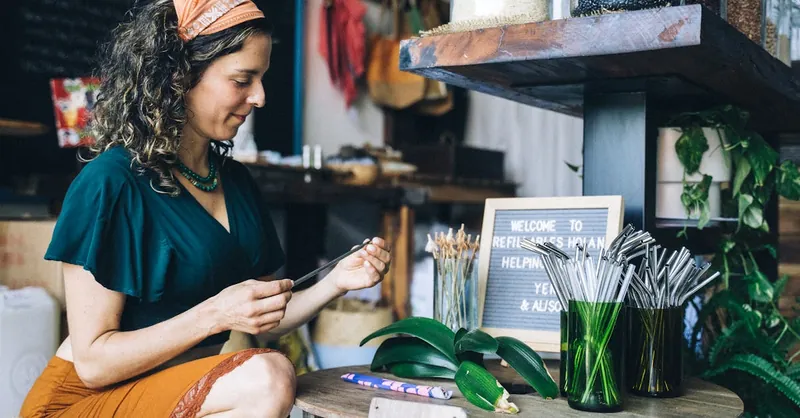
Image courtesy of Anna Tarazevich
Implementing Energy and Resource Conservation at Home
Creating a greener living environment starts with practical actions to conserve energy and resources within your home. By adopting simple yet effective habits, you not only reduce your environmental footprint but also align your minimalist lifestyle with sustainable stewardship. This approach emphasizes the conscious reduction of energy use, water consumption, plastic waste, and overall resource demand—transforming your home into a hub of eco-friendly living.
Reduce Energy Use
Minimizing energy consumption is one of the most impactful ways to practice sustainability at home. Start by:
- Switching to energy-efficient appliances and LED lighting to cut electricity use significantly.
- Unplugging electronics when not in use or utilizing smart power strips to avoid “phantom” energy drain.
- Maximizing natural light and ventilation during the day to reduce reliance on artificial lighting and climate control.
- Setting thermostat controls mindfully—adjust temperatures slightly lower in winter and higher in summer to conserve heating and cooling energy.
Conserve Water
Water is a precious, finite resource. Integrate these water-saving habits:
- Fix leaks promptly to prevent unnecessary water waste.
- Install low-flow showerheads and faucets to reduce water consumption without sacrificing comfort.
- Collect rainwater for outdoor use, such as watering plants or cleaning.
- Limit water usage in daily activities by turning off taps when brushing teeth or rinsing dishes.
Minimize Plastic Usage
Plastic pollution is a notorious environmental threat. To reduce plastic waste:
- Replace single-use plastics with reusable alternatives such as stainless steel water bottles, cloth shopping bags, and glass containers.
- Opt for packaging-free or biodegradable products when possible.
- Engage in bulk buying to minimize excessive packaging.
- Recycle plastics responsibly, adhering to local recycling guidelines.
Adopt Zero-Waste Habits
Zero-waste living complements minimalism by focusing on waste prevention through every stage of consumption and disposal. Incorporate habits such as:
- Composting organic waste to divert landfill contributions and enrich soil naturally.
- Buying secondhand or upcycled goods to extend product lifecycles.
- Refusing unnecessary items and packaging—practice mindful decluttering to prevent accumulation.
- Using washable cloths instead of disposable paper towels and cloth napkins in place of single-use alternatives.
By implementing these energy and resource conservation practices, your home becomes a model of sustainable living—where simplicity meets environmental responsibility. These meaningful adjustments, when combined with your minimalist values, build a lifestyle that honors the planet’s limited resources while enhancing your everyday well-being.
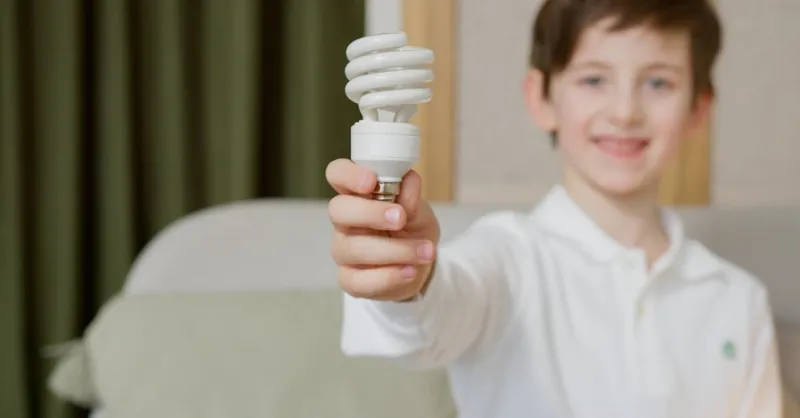
Image courtesy of Artem Podrez
Minimalist Eating: Sustainable Nutrition Choices
Simplifying your diet is a powerful extension of minimalism and sustainable living—a way to nourish your body while actively reducing your environmental impact. Minimalist eating focuses on prioritizing seasonal, local, and plant-based foods, enabling you to create meals that are both nutritionally balanced and ecologically responsible. By choosing foods grown and harvested locally and in season, you support regional agriculture, reduce carbon emissions from long-distance transportation, and enjoy fresher, more flavorful ingredients. This conscious selection fosters a deeper connection to natural food cycles, inspiring mindful eating habits that reduce food waste and excess consumption.
A predominantly plant-based diet complements this approach by lowering your carbon footprint significantly compared to meat-heavy diets. Incorporating a variety of vegetables, fruits, whole grains, legumes, nuts, and seeds not only simplifies meal planning but also enhances health with nutrient-rich, minimally processed foods. Embracing minimalist eating means avoiding processed and packaged foods, which often contribute to plastic waste and environmental degradation. Instead, focus on whole, versatile ingredients that can be used in multiple recipes, reducing over-purchasing and spoilage. Ultimately, this sustainable nutrition strategy supports your minimalist lifestyle by streamlining choices, limiting waste, and reinforcing mindful living—transforming every meal into an intentional act of environmental care and personal well-being.
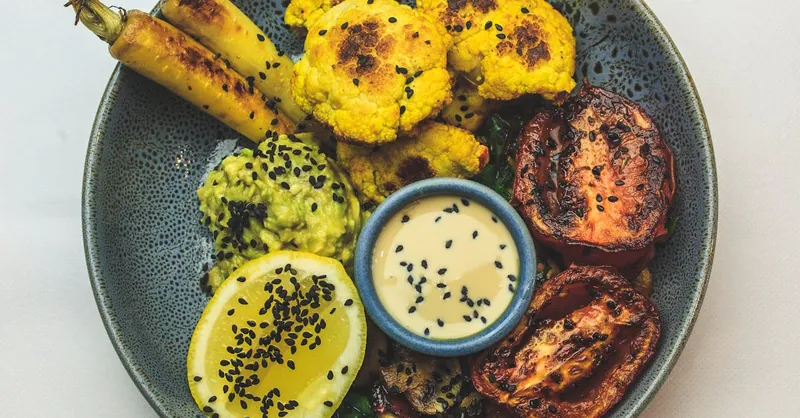
Image courtesy of Macourt Media
Cultivating a Mindful and Intentional Mindset
At the heart of minimalism and sustainable living lies a psychological shift toward mindful intentionality—a way of thinking that fosters self-awareness, gratitude, and prioritization of experiences over possessions. This mindset transformation is crucial because sustainable minimalism is not merely about decluttering physical items or reducing environmental impact; it is about cultivating a deep understanding of your values and aligning daily choices with what truly enriches your life.
The Psychology Behind Minimalism and Sustainability
Minimalism encourages self-awareness by prompting you to question your motivations for acquiring and holding onto possessions. This reflection helps break the cycle of consumerism driven by impulsive behaviors or societal pressure, replacing it with deliberate decision-making based on authenticity and need. Sustainable living complements this by emphasizing the impact of those decisions on the planet, reinforcing a sense of responsibility and connection to something larger than yourself.
With greater self-awareness comes the ability to prioritize meaningful experiences—such as spending time with loved ones, engaging in hobbies, or connecting with nature—rather than accumulating material goods. This shift boosts emotional well-being because experiences tend to bring longer-lasting satisfaction and deeper fulfillment than possessions. Research supports that memories and relationships contribute more significantly to happiness than owning things, making this aligned mindset a powerful mental and environmental investment.
Fostering Gratitude and Contentment
Practicing gratitude is a cornerstone of this mindful lifestyle. By appreciating what you already have, you reduce the urge for excess consumption and cultivate contentment with simplicity. Gratitude also expands your awareness of the interconnectedness between your life and the natural world, inspiring a respectful stewardship of resources and a commitment to sustainable practices.
To cultivate a mindful and intentional mindset:
- Regularly reflect on your values and how possessions support them. Consider journaling or meditation to deepen insight.
- Focus on cultivating relationships and experiences over accumulating items. Plan activities that nourish your soul and build connection.
- Practice daily gratitude by acknowledging the abundance in your life—both tangible and intangible.
- Question marketing messages and societal norms that promote excess consumption. Reinforce your commitment to intentional simplicity.
- Engage in mindful consumption, asking before each purchase: “Does this add meaningful value to my life, and is it ethically made?”
By embedding these psychological practices into your routine, you solidify minimalism and sustainability as enduring mindsets rather than temporary actions. This intentionality not only enhances your mental well-being but also motivates ongoing behavioral choices that honor simplicity, environmental care, and purposeful living.
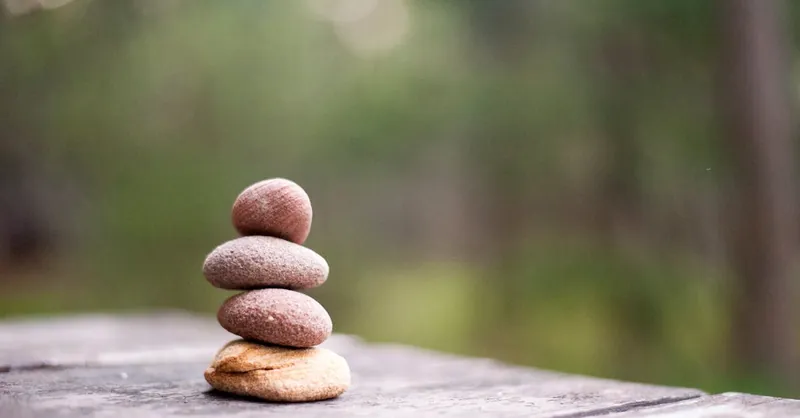
Image courtesy of nicollazzi xiong
Challenges and How to Overcome Them: Navigating Obstacles on Your Minimalism and Sustainability Journey
Embracing minimalism and sustainable living is immensely rewarding, but it often comes with its share of challenges that can test your motivation and consistency. Common obstacles include social pressures to conform to consumption-driven lifestyles, the convenience trade-offs associated with more eco-friendly habits, and the strong emotional attachments to possessions built up over time. Recognizing these barriers and proactively addressing them is key to successfully maintaining a minimalist, sustainable lifestyle.
Overcoming Social Pressures
Living simply in a world that often equates success with material wealth can feel isolating or misunderstood. To counteract social pressures:
- Build a supportive community of like-minded individuals who share your values through local groups or online forums.
- Communicate your intentions clearly with friends and family, helping them understand the purpose behind your choices.
- Practice saying no gracefully to avoid unnecessary purchases or events that conflict with your lifestyle.
- Focus on leading by example, demonstrating that fulfillment comes from intention, not accumulation.
Managing Convenience Trade-offs
Sustainable choices may sometimes require more time or effort, such as preparing meals from scratch or opting for reusable products over disposable alternatives. To ease these transitions:
- Plan ahead by meal-prepping, organizing errands efficiently, or setting reminders for eco-friendly habits.
- Start small and gradually build new routines, reducing overwhelm and making changes sustainable.
- Embrace multipurpose items and zero-waste alternatives that simplify daily tasks without compromising your values.
- Celebrate small wins to maintain motivation and acknowledge progress.
Letting Go of Emotional Attachments
Attachment to possessions—whether sentimental or habitual—can hinder decluttering and conscious consumption. Strategies to overcome this include:
- Reflect on the real value of items by assessing if they serve your present needs or simply occupy space.
- Create rituals for letting go, such as taking photos before donating or writing about memories associated with the item.
- Balance sentimental keeping by preserving a limited selection of meaningful items rather than everything.
- Redirect emotional energy into experiences or creative projects that align with your minimalist and sustainable ethos.
By addressing these challenges with practical strategies rooted in self-awareness and intention, you can sustain your minimalist and sustainable lifestyle with resilience and grace. Maintaining motivation becomes easier when you view obstacles as natural parts of your transformative journey—opportunities to deepen your commitment to simplicity, mindful living, and environmental stewardship.

Image courtesy of Polina Tankilevitch
Resources and Tools to Support Your Journey
Embarking on a path of minimalism and sustainable living is much easier and more rewarding when supported by quality resources, practical tools, and vibrant communities. To deepen your understanding and sustain motivation over the long term, leveraging curated books, apps, online courses, and social networks can provide the guidance, inspiration, and accountability needed to integrate minimalist and eco-friendly habits seamlessly into your daily life.
Recommended Books for Insight and Inspiration
Diving into thoughtful, well-researched literature can clarify core principles and offer actionable strategies:
- "The More of Less" by Joshua Becker
A foundational minimalist guide that emphasizes decluttering for a richer life, connecting simplicity with intentionality and environmental stewardship. - "Zero Waste Home" by Bea Johnson
A practical manual on drastically reducing waste by adopting minimalist habits focused on sustainability and responsible consumption. - "Braiding Sweetgrass" by Robin Wall Kimmerer
Blends indigenous wisdom with scientific knowledge, fostering a deeper ecological awareness that complements minimalist values. - "Essentialism" by Greg McKeown
Focuses on prioritizing what truly matters, aligning well with minimalist philosophies applied across all areas of life, including sustainability.
Powerful Apps to Simplify and Track Progress
Harness technology to build sustainable habits and monitor your minimalist lifestyle:
- Tody – Organizes home cleaning routines, encouraging mindful upkeep without excess effort or products.
- Good On You – Rates fashion brands on sustainability and ethical practices, supporting responsible consumption.
- Too Good To Go – Connects users with surplus food at reduced prices, reducing food waste in daily life.
- Minimalist Habit Tracker – Helps set, monitor, and maintain minimalist and eco-friendly habits with reminders and progress tracking.
Engaging Communities for Support and Accountability
Joining groups centered on minimalism and sustainability creates encouragement, shares knowledge, and fosters a sense of belonging:
- Reddit’s r/minimalism and r/ZeroWaste communities provide peer support, practical tips, and inspiring stories.
- Facebook groups like “Sustainable Minimalists” offer active discussions and local meetups.
- Meetup.com hosts local and virtual gatherings focused on minimalist living, eco-conscious workshops, and zero-waste lifestyle exchanges.
Online Courses and Workshops for Skill-Building
Structured learning formats deepen expertise and empower sustained change:
- Coursera’s "Sustainable Living" course by the University of Illinois guides learners through eco-friendly practices applicable to home and lifestyle.
- Udemy’s Minimalism Masterclass teaches practical decluttering, budgeting, and mindset shifts for long-term simplicity.
- Zero Waste Home Workshops hosted by Bea Johnson and similar experts provide hands-on training in waste reduction and conscious living techniques.
By integrating these trusted resources and tools into your journey, you’ll build a strong foundation of knowledge, practical skills, and community support essential for thriving in a minimalist and sustainable lifestyle. These aids not only enrich your understanding but also empower consistent, mindful choices that foster lasting environmental impact and personal well-being.

Image courtesy of cottonbro studio
